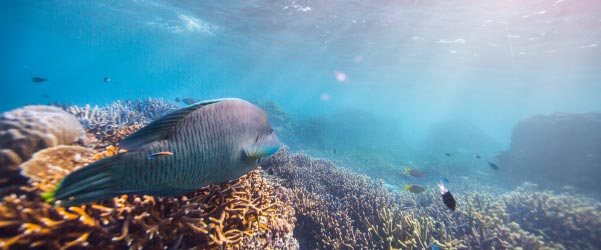For People and Planet – WWF Australia
WWF’s mission is bold and clear: it’s working towards a future in which the planet and people live in harmony.
As the world’s leading independent conservation organisation, working in 100 countries on six continents, it’s an ambitious mission and one that depends heavily on the support of its five million supporters around the world.
WWF is relying on these individuals, governments, businesses and communities to rally together to ensure a future where people and nature can co-exist and thrive. Supporting WWF means that everyone can play a part in protecting the natural wildlife and habitats that we love in Australia and around the world.
For International Charity Day we spoke with WWF staff locally to find out how businesses and their employees who commit to doing their bit will help here in Australia.
The need for WWF’s work internationally is diverse and wide-reaching – the movement is helping to conserve nature and reduce the greatest threats to our planet. No easy feat.
Keeping the Focus
Here in Australia a new five-year vision has been developed to define WWF-Australia’s focus. The goal for the local arm of WWF is to conserve biodiversity in Australia and throughout the Oceania region in four key areas:
-
Saving our threatened species
Many of our much-loved Aussie wildlife species such as the koala, black-flanked rock wallaby and marine turtles are under pressure. WWF-Australia is working hard to stabilise and grow the remaining populations of our iconic Australian species, protecting entire landscapes and ecosystems in the process. WWF-Australia also works with offices and partners in the region to protect species like the orangutan, tigers and Asian elephants.
-
Protecting our marine life
Australia is surrounded by three of the greatest oceans – the Pacific, Indian and Southern Ocean. We all make use of them for our own benefit – for food and in a very Aussie way, for recreation. And so it only seems fair we also look after them as habitats and as homes for thousands of species like Southern Right Whale, and the Snubfin dolphin found in the waters of The Kimberly.
-
Creating a low-carbon future
Our climate is now rapidly changing, threatening the people, animals and places that we know and love. WWF work to accelerate solutions and gain momentum for Australia’s transition to net-zero carbon pollution.
-
Ensuring a sustainable food supply
Food is essential for human life, but food production is one of the world’s biggest causes of environmental degradation. WWF works to champion ‘planet-friendly’ alternatives that are good for nature and good for people. They also help Australia’s priority food systems conserve nature, minimise waste and become resilient to environmental change.
Image © WWF / James Morgan
Harnessing the Potential of Employee Giving
At the same time as prioritising these important focus areas, WWF-Australia is setting itself on a path to harness the potential of workplace giving and support from Australian businesses, to help make it happen.
“We know it’s something we need to do together. Only then can we make a difference to our planet,” says Monique Isenheim, Business Partnerships Manager at WWF-Australia.
“WWF-Australia has around 500,000 supporters who drive our day to day commitment to deliver conservation programs to protect our natural resources. We couldn’t do it without them.”
WWF is planning to increase the business and employee giving share of their income, which is currently sitting at around 10% of their annual income.
“We want to focus on giving back to our loyal workplace donors. Around 376 (as at July, 2017) already regularly contribute to WWF from their pre-tax income using Good2Give, but we want to progress those relationships and increase the number of employees giving through their pay,” says Monique.
“It’s a very reliable, flexible and important source of funding for us and we value those small and frequent contributions which collectively have a huge impact.”
WWF’s focus on developing their corporate funding and support has led to the recent employment of a new Workplace Giving Coordinator, Saskia Ek, in tandem with progressing the development of an organisation-wide solution to match offers of volunteering to identified internal needs.
“We often get generous offers of pro bono support but we need to take all of our learnings and create a productive and seamless system to link those offers to our actual needs,” says Saskia.
“We’re doing this in conjunction with ramping up our workplace giving program as we want to invest more into this growth area. It has loads of potential and we want to make the most of it.”
And WWF-Australia see Good2Give as one of their suite of tools that will give them a helping hand.
“We have a legacy of workplace giving partners and many have supported us for a long time,” Saskia explains.
“The Good2Give platform makes it easy and efficient for them to contribute regularly without the fuss, and at the same time it’s a great staff engagement tool for employers.”
https://youtu.be/zTau1cqtg4U
From an army of ants to a herd of elephants, WWF believes the change that is needed to nurture these animals and to protect their environment is “together possible.”
Feature image © David Lawson / WWF-UK
If your company has Good2Give’s workplace giving program in place, you can donate to WWF-Australia while you work. If not, visit the charity’s website to support their life changing programs, services and innovations.





